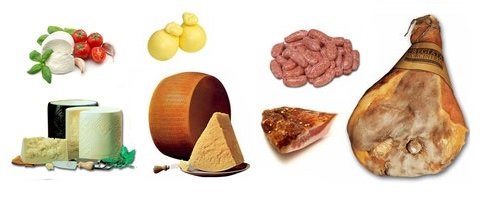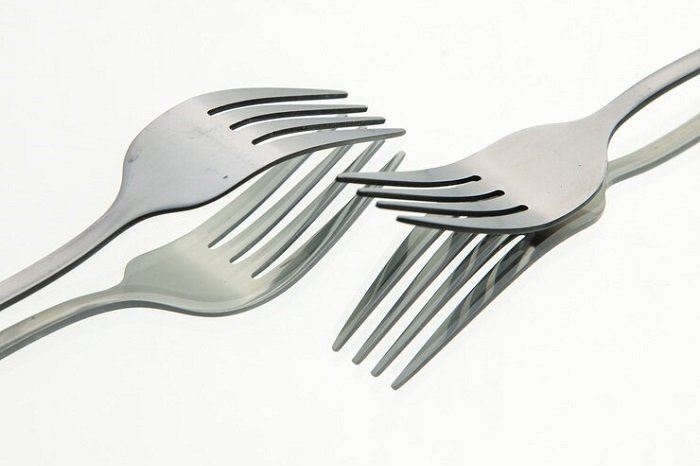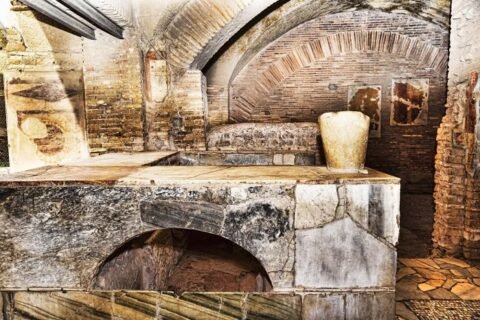From a curious tool used occasionally by the nobility, to an everyday utensil found on every table: Stefano Milioni tells us about the rise of the fork thanks to pasta.
We saw last Wednesday how in the first half of the 19th century the consumption of dry pasta finally spread through society, became fashionable, and serving it became a sign of distinction.
However, the addition of the sauce made the pasta a messy dish to be eaten with the hands and a tool as curious as it was neglected up to that point soon began to appear on the tables of the bourgeoisie: the fork.
That tool had existed for several centuries in various forms and had served various functions on the tables of refined and snobbish families throughout Europe. However, its use as a standard utensil had not been established. The fork was placed on the tables of a small number of nobles to impress guests rather than help them eat.
Blessed be the fork

The widespread practice of eating pasta topped with tomato sauce has led to the ‘adoption of the fork as an everyday utensil. The many previously known designs were abandoned. The shape and proportions of the fork were changed, and within a few years a single format appeared. The new standard tool had four curved prongs, the length of which did not exceed twice their combined width.
Any hotel maître d’ today could provide a lengthy commentary on the precise forms and functions of forks, including those used for eating fish, meat, snails, shellfish, “saucy” dishes, desserts and fruits. And no doubt would express disapproval of any misuse of the utensil.
The fact remains, however, that, for two centuries now, it has been customary in private homes and in most restaurants around the world to use for almost all uses only the fork designed for pasta, with its four curved tines.
The final evolution of pasta

Pasta seasoned with oil and tomato constitutes only a beginning, not a gastronomic achievement, because that essential dish opened a new world of flavors and aromas.
While inventiveness stalled for centuries on boiled vermicelli with, perhaps, the addition of a little cheese to make them more flavorful, the imagination of housewives, first, and then of cooks and gourmets produced within a few years a myriad of preparations in which tomatoes and their sauce were combined with the best products of the Italian tradition, such as mozzarella, provola, parmesan, prosciutto, guanciale and an endless roundup of cheeses, fish, meats, preserves and delicacies.
Pasta and all these traditional products were called upon in a veritable orgy of innovation, in which Italian cuisine was completely revamped.

The 19th century, the century of great political changes in Italy. From foreign domination to national unity, the century of the Risorgimento, Garibaldi and Cavour, is also the time of the final evolution of pasta. The Transition from poverty to nobility, from survival food to delicacy.
And at the same time that the creativity of chefs, the inventive power of pasta makers emerges. In this century, small and large pasta factories initiate a methodical search for new formats. Able, at the same time, to capture the attention of consumers, and ensure them new and unknown gastronomic pleasures.
The history of pasta over the past two centuries is a mix of imagination, technology and marketing. A long and complex history that we have already recounted.
Freely excerpted from “RuvidaMente.com,” courtesy of the author.










